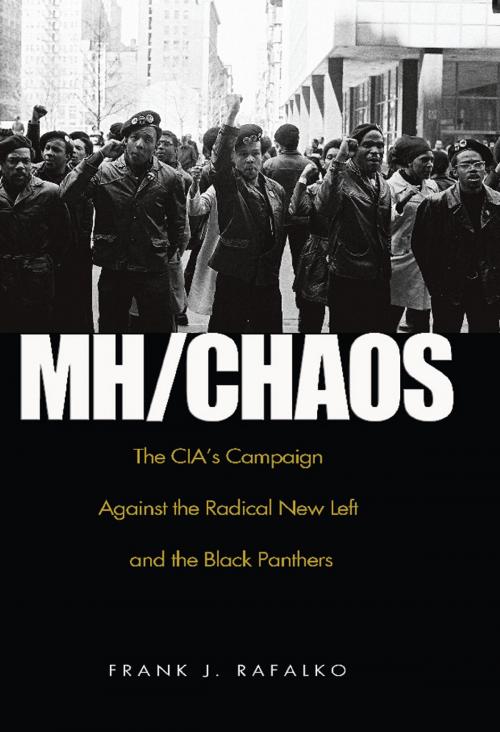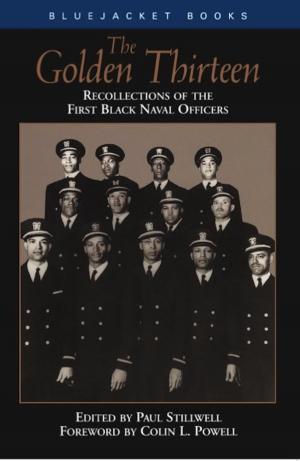MH/CHAOS
The CIA'S Campaign Against the Radical New Left and the Black Panthers
Nonfiction, Social & Cultural Studies, Political Science| Author: | Frank J. Rafalko | ISBN: | 9781612510705 |
| Publisher: | Naval Institute Press | Publication: | October 15, 2011 |
| Imprint: | Naval Institute Press | Language: | English |
| Author: | Frank J. Rafalko |
| ISBN: | 9781612510705 |
| Publisher: | Naval Institute Press |
| Publication: | October 15, 2011 |
| Imprint: | Naval Institute Press |
| Language: | English |
Operation MH/CHAOS was the code name for a domestic espionage project conducted by the Central Intelligence Agency in the late1960s and early 1970s. MH/CHAOS: The CIA’s Campaign Against the Radical New Left and the Black Panters is an insider’s account of the CIA’s Counterintelligence Staff’s Special Operations Group first charged by Presidents Lyndon Johnson and later by Richard Nixon to find foreign intelligence, terrorist, organizations or government contacts, controlling or influencing Anti-Vietnam War activists or American black extremists protesting, bombing and carrying out other anti-government, unlawful or illegal activities in the United States. The operation was launched under Director of Central Intelligence Richard Helms, by chief of counter-intelligence, James Jesus Angleton, and headed by Richard Ober. The program's goal was to unmask possible foreign influences on the student antiwar movement. The "MH" designation signified that the program had a worldwide area of operations. When President Nixon came to office in 1969, all of the existing domestic surveillance activities were consolidated into Operation MH/CHAOS and used CIA stations abroad to report on antiwar activities of United States citizens traveling abroad, employing methods such as physical surveillance and electronic eavesdropping, utilizing "liaison services" in maintaining such surveillance. The operations were later expanded to include 60 officers. In 1969, following the expansion, the operation began developing its own network of informants for the purposes of infiltrating various foreign antiwar groups located in foreign countries that might have ties to domestic groups. Eventually, CIA officers expanded the program to include other leftist or counter-cultural groups with no discernible connection to Vietnam, such as groups operating within the women's liberation movement, including Students for a Democratic Society, the Black Panther Party and Women Strike for Peace. Also targeted was the Israeli embassy, and domestic Jewish groups such as the B'nai B'ritht. As a result of the Watergate break-in, involving two former CIA officers, Operation MH/CHAOS was discontinued. The secret nature of the program was exposed by Seymour Hersh in the New York Times on December 22, 1974. The following year, further details were revealed during Representative Bella Abzug's House Subcommittee on Government Information and individual Rights. The government, in response to the revelations, launched the Commission on CIA Activities Within the United States (The Rockefeller Commission), lead by then Vice President Nelson Rockefeller, to investigate the depth of the surveillance.
In MH/CHOAS, the author, who is a former CIA officer, refutes the charges made by the New York Times and the Washington Post at the time that this domestic spying program first made headlines, and takes issue with conclusions of the Rockefeller Commission and the Church Committee. He relates how the Special Operations Group began, was staffed and how it was transformed into an anti-terrorist unit before it ceased operation. Rafalko details the information that Special Operations Group collected against the New Left and Black extremists and makes the case that the MHCHAOS program was justified, why the CIA was the logical agency to conduct the collection, and the consequences suffered later by American counterintelligence because of these investigations.
In MH/CHOAS, the author, who is a former CIA officer, refutes the charges made by the New York Times and the Washington Post at the time that this domestic spying program first made headlines, and takes issue with conclusions of the Rockefeller Commission and the Church Committee. He relates how the Special Operations Group began, was staffed and how it was transformed into an anti-terrorist unit before it ceased operation. Rafalko details the information that Special Operations Group collected against the New Left and Black extremists and makes the case that the MHCHAOS program was justified, why the CIA was the logical agency to conduct the collection, and the consequences suffered later by American counterintelligence because of these investigations.
Operation MH/CHAOS was the code name for a domestic espionage project conducted by the Central Intelligence Agency in the late1960s and early 1970s. MH/CHAOS: The CIA’s Campaign Against the Radical New Left and the Black Panters is an insider’s account of the CIA’s Counterintelligence Staff’s Special Operations Group first charged by Presidents Lyndon Johnson and later by Richard Nixon to find foreign intelligence, terrorist, organizations or government contacts, controlling or influencing Anti-Vietnam War activists or American black extremists protesting, bombing and carrying out other anti-government, unlawful or illegal activities in the United States. The operation was launched under Director of Central Intelligence Richard Helms, by chief of counter-intelligence, James Jesus Angleton, and headed by Richard Ober. The program's goal was to unmask possible foreign influences on the student antiwar movement. The "MH" designation signified that the program had a worldwide area of operations. When President Nixon came to office in 1969, all of the existing domestic surveillance activities were consolidated into Operation MH/CHAOS and used CIA stations abroad to report on antiwar activities of United States citizens traveling abroad, employing methods such as physical surveillance and electronic eavesdropping, utilizing "liaison services" in maintaining such surveillance. The operations were later expanded to include 60 officers. In 1969, following the expansion, the operation began developing its own network of informants for the purposes of infiltrating various foreign antiwar groups located in foreign countries that might have ties to domestic groups. Eventually, CIA officers expanded the program to include other leftist or counter-cultural groups with no discernible connection to Vietnam, such as groups operating within the women's liberation movement, including Students for a Democratic Society, the Black Panther Party and Women Strike for Peace. Also targeted was the Israeli embassy, and domestic Jewish groups such as the B'nai B'ritht. As a result of the Watergate break-in, involving two former CIA officers, Operation MH/CHAOS was discontinued. The secret nature of the program was exposed by Seymour Hersh in the New York Times on December 22, 1974. The following year, further details were revealed during Representative Bella Abzug's House Subcommittee on Government Information and individual Rights. The government, in response to the revelations, launched the Commission on CIA Activities Within the United States (The Rockefeller Commission), lead by then Vice President Nelson Rockefeller, to investigate the depth of the surveillance.
In MH/CHOAS, the author, who is a former CIA officer, refutes the charges made by the New York Times and the Washington Post at the time that this domestic spying program first made headlines, and takes issue with conclusions of the Rockefeller Commission and the Church Committee. He relates how the Special Operations Group began, was staffed and how it was transformed into an anti-terrorist unit before it ceased operation. Rafalko details the information that Special Operations Group collected against the New Left and Black extremists and makes the case that the MHCHAOS program was justified, why the CIA was the logical agency to conduct the collection, and the consequences suffered later by American counterintelligence because of these investigations.
In MH/CHOAS, the author, who is a former CIA officer, refutes the charges made by the New York Times and the Washington Post at the time that this domestic spying program first made headlines, and takes issue with conclusions of the Rockefeller Commission and the Church Committee. He relates how the Special Operations Group began, was staffed and how it was transformed into an anti-terrorist unit before it ceased operation. Rafalko details the information that Special Operations Group collected against the New Left and Black extremists and makes the case that the MHCHAOS program was justified, why the CIA was the logical agency to conduct the collection, and the consequences suffered later by American counterintelligence because of these investigations.















